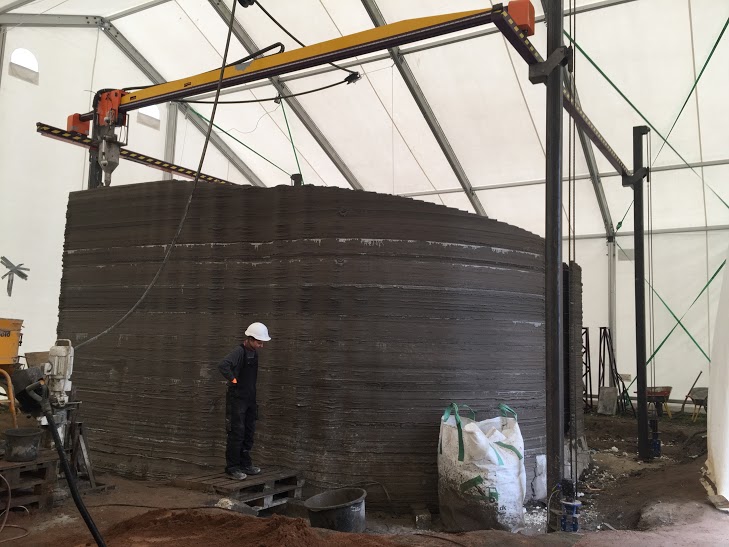Danish 3D printing company 3D Printhuset has completed the printed structure of the Building on Demand (BOD), a 3D printed office-hotel stated to be Europe’s first inhabitable 3D printed building. The BOD, printed on site in Nordhaven, Copenhagen, will now be fitted and furnished.
While there were problems that delayed the BOD’s planned completion date by a number of weeks, according to 3D Printhuset, these were not related to the 3D printing process itself.

The house that BOD built
As 3D printing industry reported in September, 3D Printhuset, which started out as a 3D printing retailer and rapid prototyping service provider, had just broken ground and was preparing to 3D print the entire structure of an office hotel building.
Ahead of printing, 3D Printhuset director Henrik Lund-Nielsen noted the “scepticism” that the project had received from the construction industry, but expressed hopes that “the BOD will be an effective demonstration project that can inspire others to continue and apply 3D print technology to buildings.”
The exterior walls of the flat-roofed office hotel would be 3D printed by 3D Printhuset’s own 3D printer using printable cement produced from recycled bricks and sand. Consrtuction began on 11 September.
Expectations and reality
The printing process took twice the estimated completion time. 3D Printhuset CTO Jakob Jørgensen explained that “3D printing went as planned,” but the project team instead “had severe difficulties with the whole material handling prior to printing” which caused equipment failures. The team was also delayed by “faulty material deliveries.”
“Not counting the hours and days where the printer was standing still awaiting other problems to be solved, it only took the planned 50 hours to do the printing of the walls…”
However, Henrik Lund-Nielsen admitted that “perhaps we were too optimistic with our planning” and accounting for delays. “That said,” he added “we did manage to do what we set out to do and to make this demonstration project showing the usability of the technology.”
Lund-Nielsen warned that having the entire building ready and fully installed for 30 November was no longer a realistic prospect, but also said that visitors to the site would be able to “inspect the result of the application of the 3D printing technology” in full.
From strong foundations
Inevitably, the BOD will face competition when describing itself as Europe’s first 3D printed inhabitable structure. Russia’s AMT-SPETSAVIA, which itself helped 3D Printhuset in the construction of its 3D concrete printer, completed a 3D printed house at the end of October in the city of Yaroslavl.
Different standards and definitions apply to different construction projects. The 3D printed components of AMT-SPETSAVIA’s house were not printed on site, but prefabricated, and the house was constructed according to Russian, not EU building standards (like the BOD or France’s incomplete Yhnova Batiprint project). But unlike AMT-SPETSAVIA and Batiprint, the BOD will not be a place of permanent habitation.
3D Printhuset plans to formally present and explain the 3D printing process behind the BOD and the problems it encountered at a 3D construction conference in Copenhagen on November 30 (including a visit to the BOD site).
Featured speakers at the event will be Contour Crafting’s Prof. Behrokh Khoshnevis, the inventor of 3D printed construction, and fellow 3D printed construction companies Apis Cor, CyBe and Xtree.

For more information on 3D printing in construction, subscribe to our free 3D Printing Industry newsletter, follow us on Twitter, and like us on Facebook.
Featured image shows the giant gantry supported 3D concrete printer as it finishes 3D printing the BOD. Photo via 3D Printhuset.

